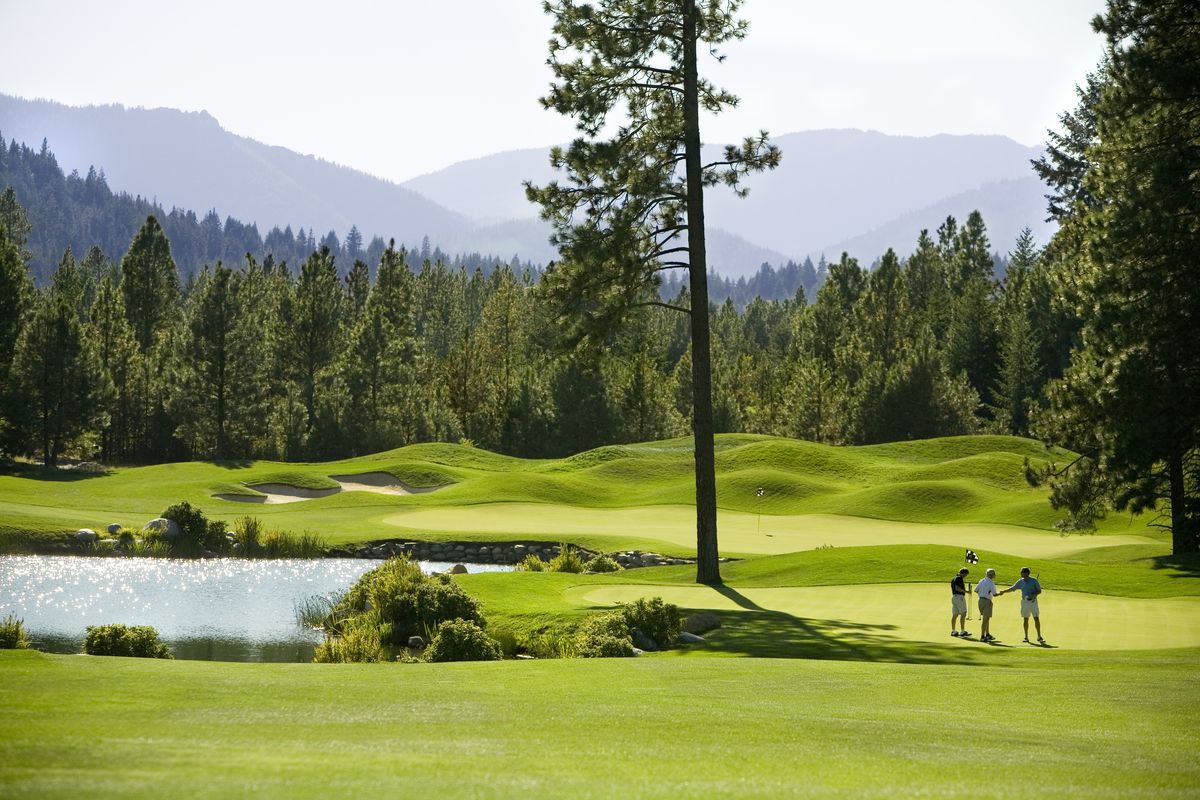Delving into the greenery
Continually baffling greens provide a nonstop challenge

This scenic track isn’t quite as long as Rope Rider, but what it lacks in length it makes up for with plentiful bunkers and complex greens. We played the back tees, measuring 6,641 yards. From the tips, Prospector stretches out to 7,112 yards. Two other tee boxes check in at 6,159 and 5,362 yards.
“All 18 holes are built on mountain, foothill terrain and every hole has its own playing quarters,” director of golf Brady Hatfield said. “The green complexities make Prospector challenging.”
The front begins with a pair of 400-yard par 4s. The greens began baffling me on No. 1, where I was maybe 25 feet from the cup. I walked from my ball to the cup and couldn’t tell if my putt was uphill, downhill or level. I was fortunate to lag within “gimmie” range, but the greens got their revenge numerous times over the remaining holes.
“Two factors go into reading the greens,” Hatfield said. “One is they moved so much dirt making Prospector that it’s
hard to determine true downhill. Every putt wants to break East but it’s hard to see that when you’re looking over a putt.
“On No. 1 you’ll be pin high and see the mound behind the green and think it breaks to the front, but it’ll actually break to the back.”
I made my first ball donation into high grass well left of the No. 2 fairway, the result of a hideous pull hook.
The fairways are truly generous at Prospector, but spray it wide and you might need a search party to locate your ball. The good news is if you don’t find your ball, chances are you’ll find someone else’s.
The par 5s, all between 498 and 519 yards from the back tees, are generally reachable in two but only if you can land an approach softly on a fairly small target. Most of the greens at Prospector are either wide and shallow or narrow and long. Both require precise approach shots.
The fifth hole is a classic risk-reward par 4. Hatfield described four ways to play the 325-yard hole protected by a large pond and narrow green: Go for the green, hit driver or 3-wood about 250 yards leaving a simple chip shot, challenge the edge of the water with a 205-yard tee shot or avoid the pond by aiming at the 150-yard stake. It’s roughly a 270-yard carry over the pond to the green.
“I play that hole by where the flag is,” Hatfield said.
“If it’s tucked to the right, you don’t have to carry the water (on the tee shot) and you can lay up to the right. If the pin is tucked left and you have to negotiate the water, I’d rather take my chances on the tee box.”
The fairway on the par-4 seventh hole was one of the smallest landing areas. No. 9 featured a large pond that pretty much took driver out of the equation. Three balls in our group met watery graves, one that spun back off the front edge of the green.
Players reach for their cell-phone cameras on the 393-yard 10th hole. It’s a 125-foot drop from the tees to the fairway with spectacular views of the Cascades. The hole itself is a challenge. If the wind is at your back, the wise play is to try to fly a bunker on the left. It might leave you in the rough, but the diagonal green is more accessible from that angle. If the wind is in your face, you might have to aim for a narrow fairway and face a longer second shot.
The green is perhaps 40-45 yards deep.
“It’s by far the most talked about hole,” Hatfield said. “The aesthetic view gives you a perfect snapshot of the terrain the course is built on.”
One of the better par 4s is the uphill, 400-yard 14th. It’s typically a 6- or 7-iron approach to an elevated green. Like many of Prospector’s holes, 10 and 14 demand solid second shots.
“It’s 100 percent a second-shot course in a lot of ways,” Hatfield said.